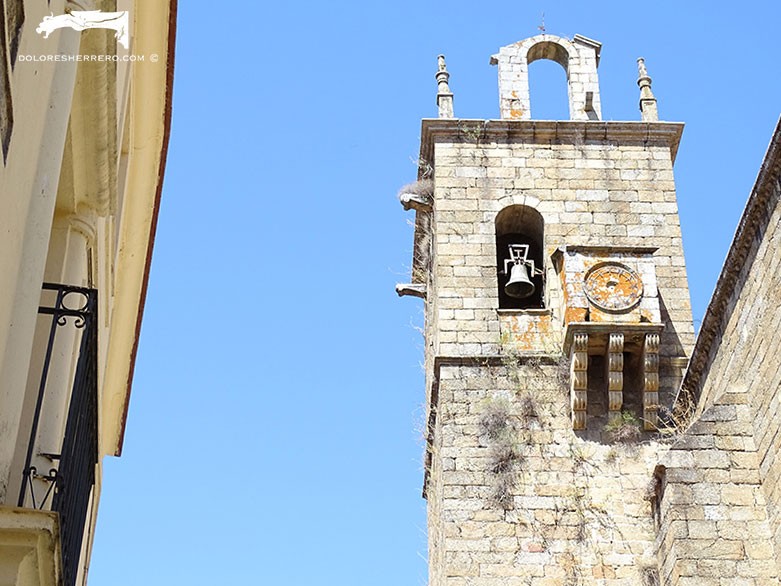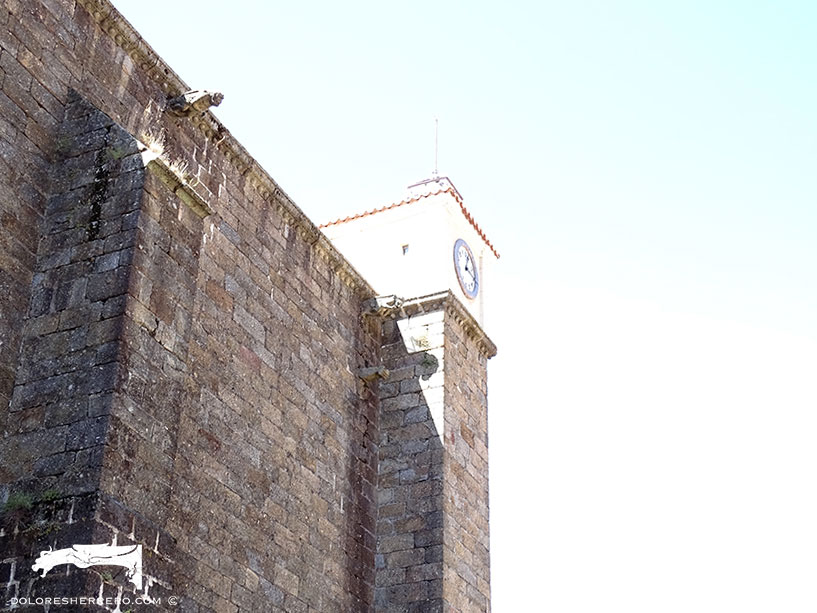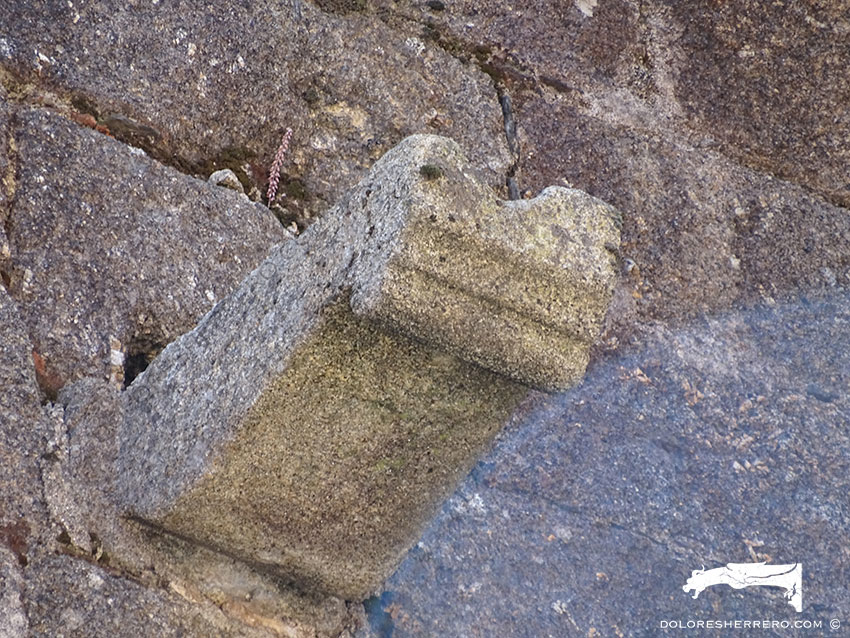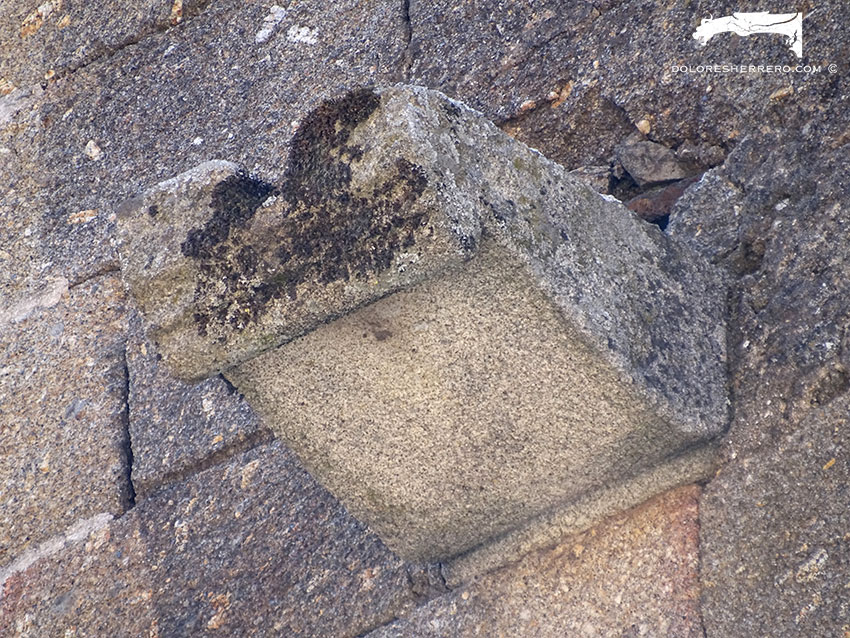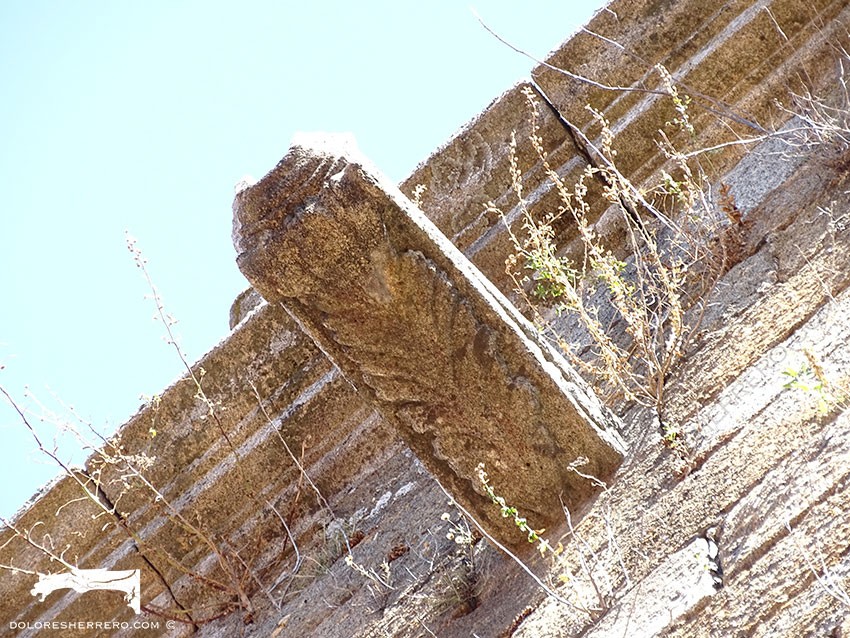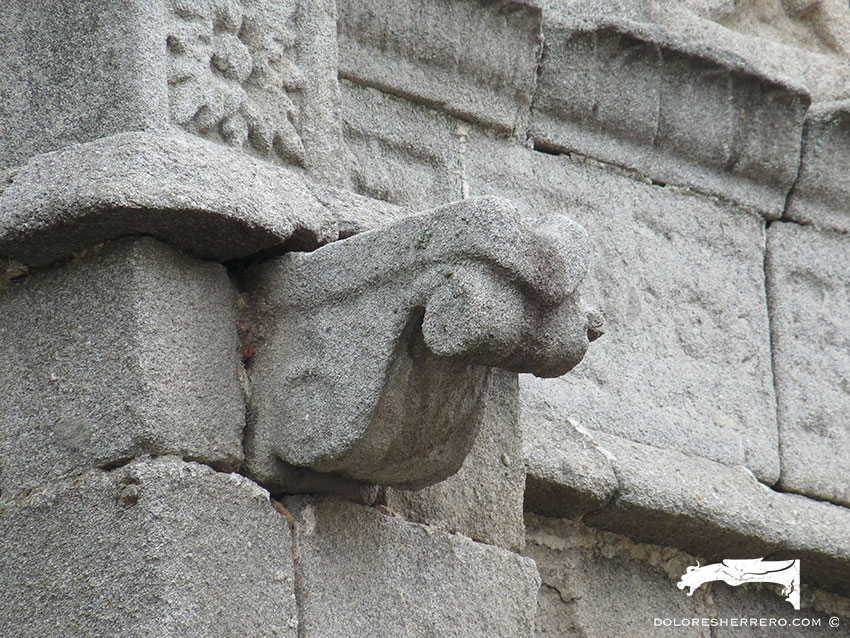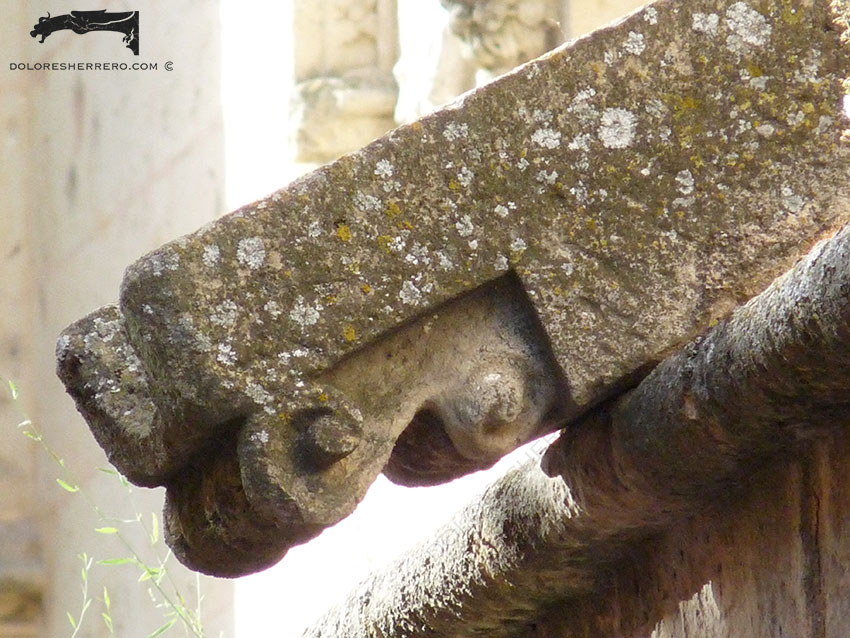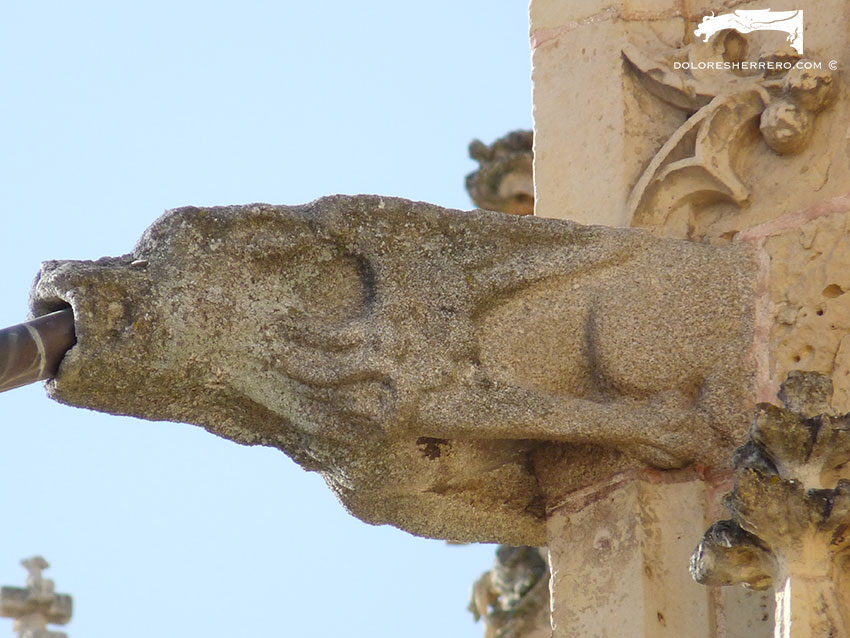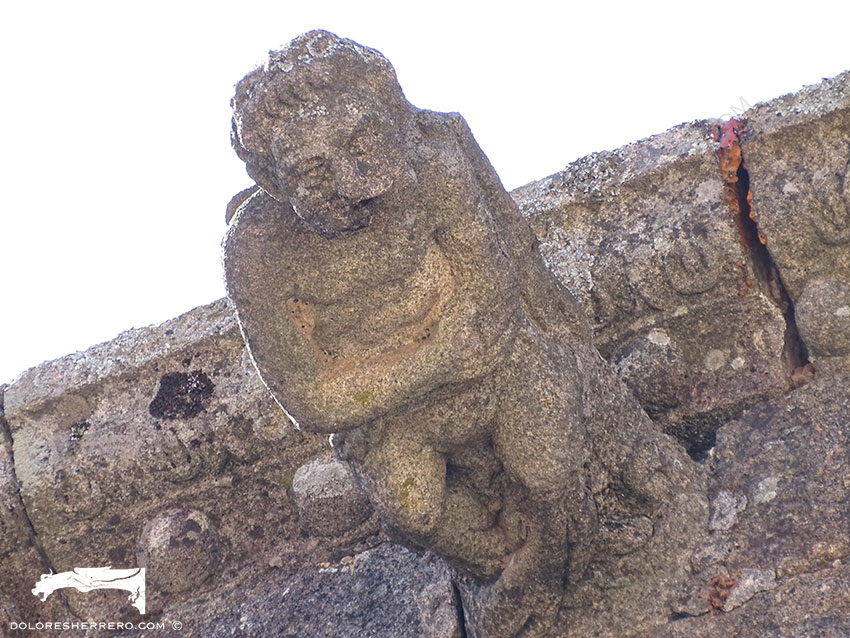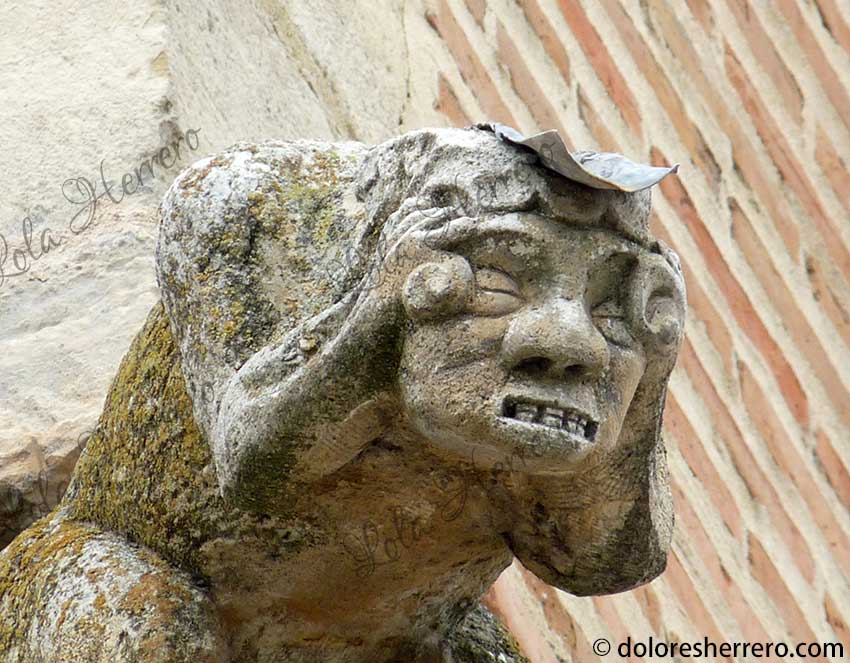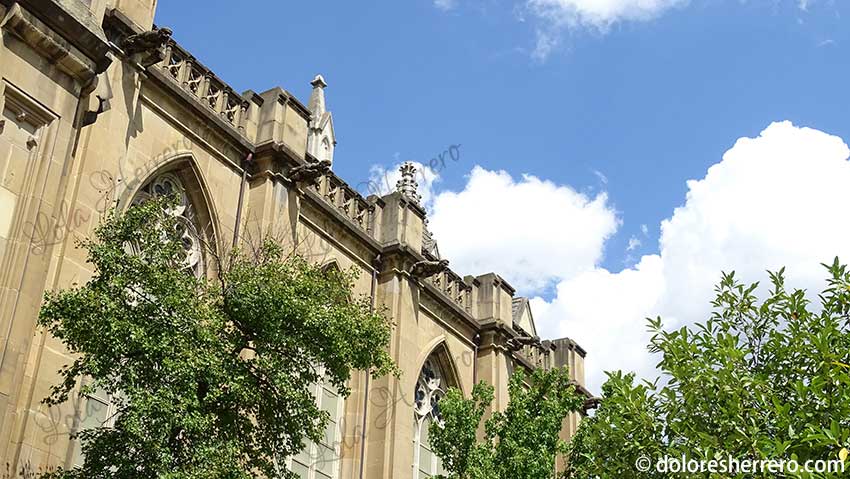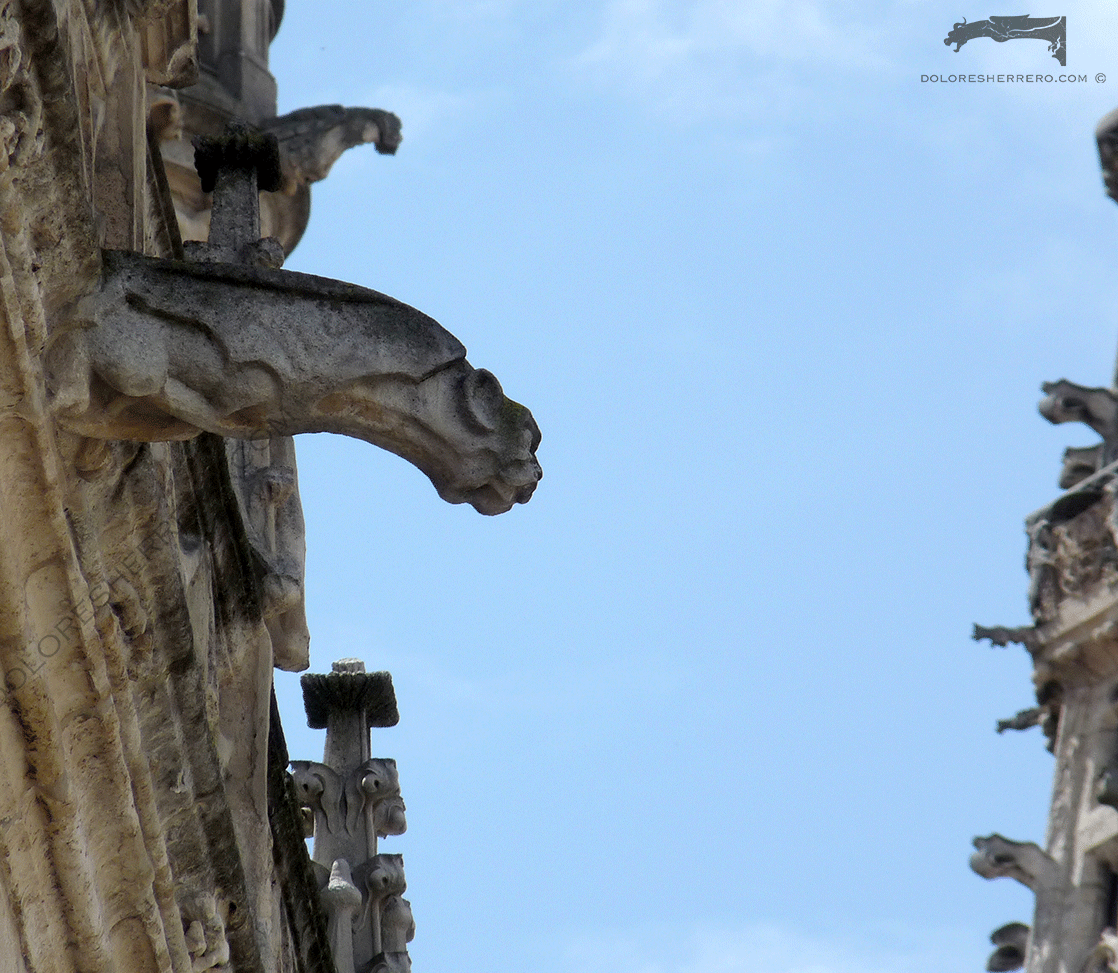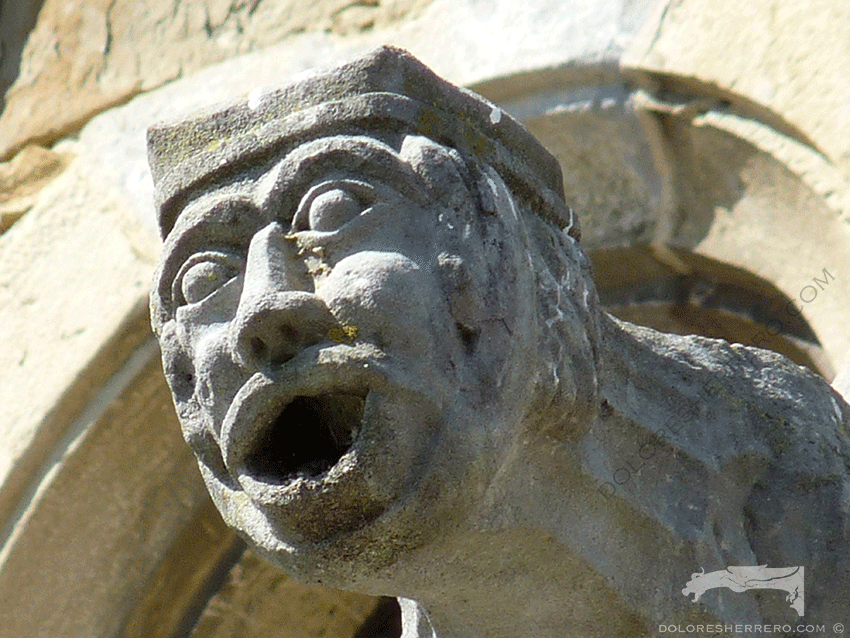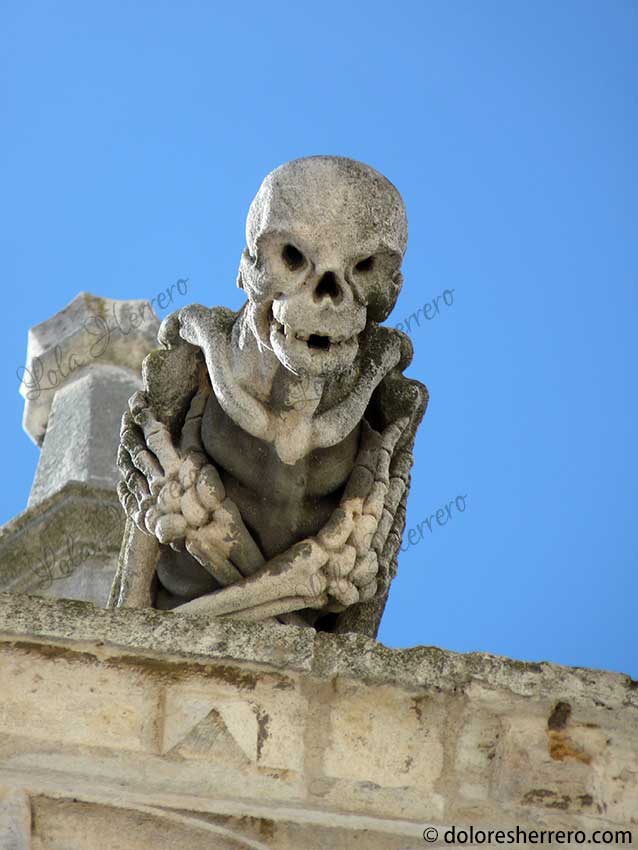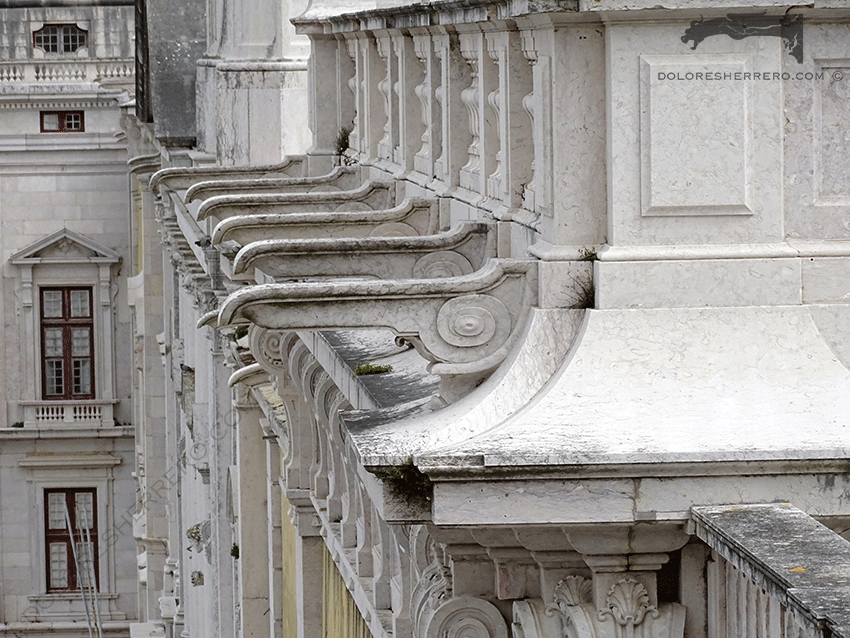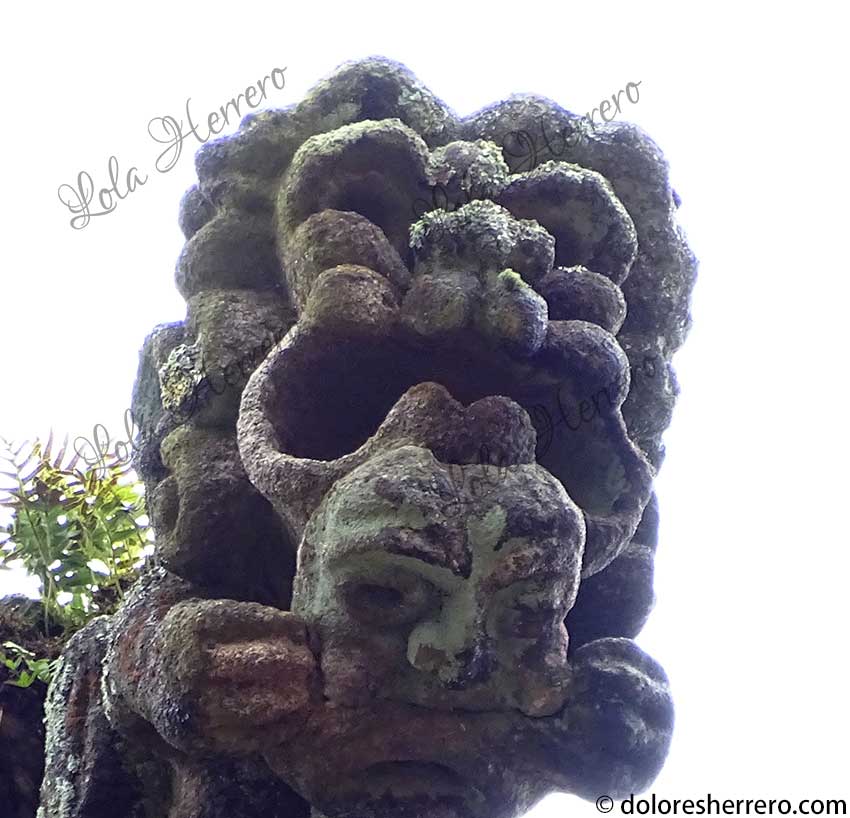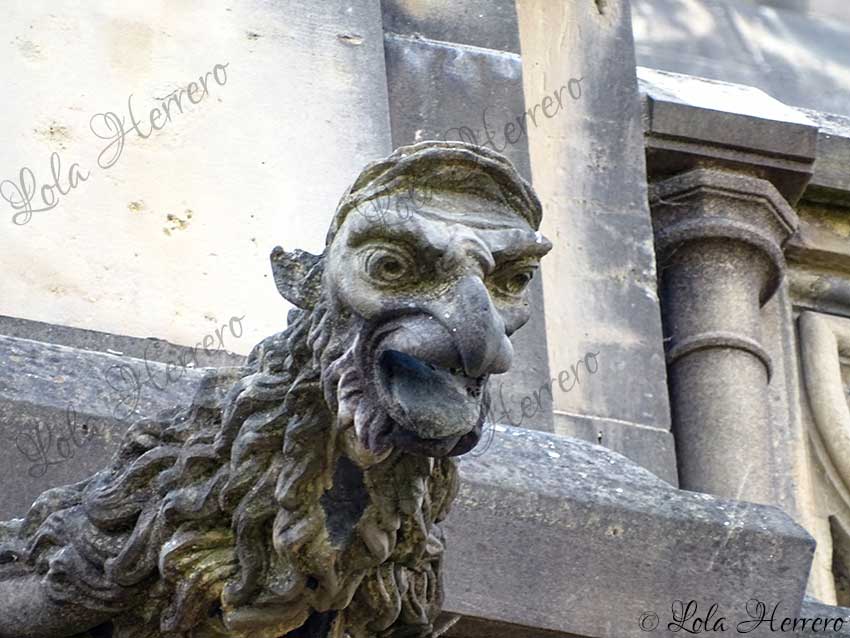Today’s post is about one of the most interesting sets of gargoyles we have discovered on our trips.
They are the gargoyles on the Parish Church of San Pedro in the magnificent town of Gata in the lovely province of Cáceres (Spain). And by magnificent I don’t mean big, I’m referring to the amazing beauty not only of the town itself but also of the landscapes surrounding it.
Thanks to Lola, the town’s resident tourist guide, artist and historian, who encouraged me to visit Gata to see the gargoyles on the church, we discovered some fascinating figures.
The church was built between the 16th and the 18th centuries, although there was a parish church in the 13th century and the Order of Alcántara held its Chapter meeting there in 1410.
Gargoyles
The gargoyles are extremely interesting in both a formal and an iconographic sense. They represent a variety of types, bearing in mind that there are only around a dozen or so of them.
You can see animals like the lion and the dog. The figure of the lion is very distinctive, with its legs pointing upwards (as if rampant) and the head to one side, a stance that makes it very expressive. A dog with simple features and a large collar made up of balls is unlike the others, and another vaguely shaped animal holds its paws up to its mouth.
- Lion with its head to one side
- Dog
- Dog with collar of balls
- Animal figure with paws in its mouth
There also geometrical gargoyles. They are rectangular and some have a simple shape with moulding underneath the opening. Others are highly original as apart from the triple moulding in the opening, giving them a more ornamental appearance, their bodies have lovely plant decorations and on the sides you can see a kind of scroll rolled up at the ends, typical of the Renaissance period and seen in other gargoyles such as the ones on Ávila and Segovia Cathedrals (Spain).
- Ávila Cathedral (Spain)
- Segovia Cathedral (Spain)
There is also a winged quadruped with a dog-like head, bat-like wings and long ears that looks like some of the gargoyles on Segovia Cathedral (Spain). It also has a human head under its body, a common feature of gargoyles with different meanings (ornamental, sinner and so on).
- Winged quadruped
- Segovia Cathedral (Spain)
However, the most remarkable and eye-catching gargoyles on this church are the human figures. They all have crossed legs, a gesture of arrogance.
One of the men holds his right hand up to his beard while his left is resting on his knee. Another (rather more weathered so the details aren’t very clear) rests his arms in his lap and has protuberances on his lower body and feet that end in double hooves or perhaps pincers.
- Man with one hand on his beard and the other on his knee
- Man with one hand on his beard and the other on his knee
- Man with one hand on his beard and the other on his knee (detail)
- Man with arms in his lap
The only gargoyle with a female body is a superb, impressive sculpture. It shows a woman with curly hair (the image of a loose woman), drooping breasts, with her right hand on her genitals and her left hand on one breast. Symbolically speaking, it’s very interesting as it can have several meanings. On the one hand it might be related to lust, as you often see this gesture in Romanesque and Gothic sculpture. It can also refer to the idea of the sinful woman who covers her sex with her hands as a sign of shame, like sinful Eve. It could even be a figure with devilish connotations, not only because of the dropping breasts ― a feature that appears in some devils and that we looked at in a previous post ― but also because the feet end in the shape of a snake’s tail (in a spiral) and, as we know, the snake is an animal linked to the devil. However, this last feature on the feet could also be related to the idea of the human being transformed into an animal because of their sins ― like the previous figure ― a type of gargoyle seen in churches and cathedrals to warn the faithful of the consequences of their sins and that we saw when we discussed symbolism.
Lastly, on the same façade as the woman, there is a man with his right hand on his beard and his left resting on his right arm, deep in thought. In terms of the previous gargoyle and also bearing in mind how close they are to each other and both naked, it could easily be the figure of a sinner, in this case, of sinful Adam. Plus, and in connection with his crossed legs, don’t forget that the original sin was that of arrogance.
These human gargoyles are wonderful, expressive and amazing, exceptionally well carved and with great iconography.
We urge you to take a closer look at Gata’s history, where you’ll discover significant characters and event such as the Order of Alcántara, Antonio de Nebrija, the Revolt of the “Comuneros” and many others.
A lovely town, breathtaking views, a valuable church with a Baroque oak altarpiece plus some beautiful gargoyles that are part of Extremadura’s artistic heritage, of everyone’s heritage.
- Woman covering her sex
- Man with one hand on his beard and the other on his other arm
Bibliography consulted
CAMILLE, M., El ídolo gótico. Ideología y creación de imágenes en el arte medieval, Madrid, Ediciones Akal, S. A. Arte y Estética, 57, 2000.
KENAAN-KEDAR, N., Marginal Sculpture in Medieval France. Towards the deciphering of an enigmatic pictorial language, Hants (England) and Vermont (USA), Scolar Press and Ashgate Publishing Company, 1995.
REBOLD BENTON, J., Holy Terrors. Gargoyles on medieval buildings, New York, Abbeville Press, 1997.

Doctora en Historia del Arte. Investigadora especializada en el estudio de las gárgolas.


